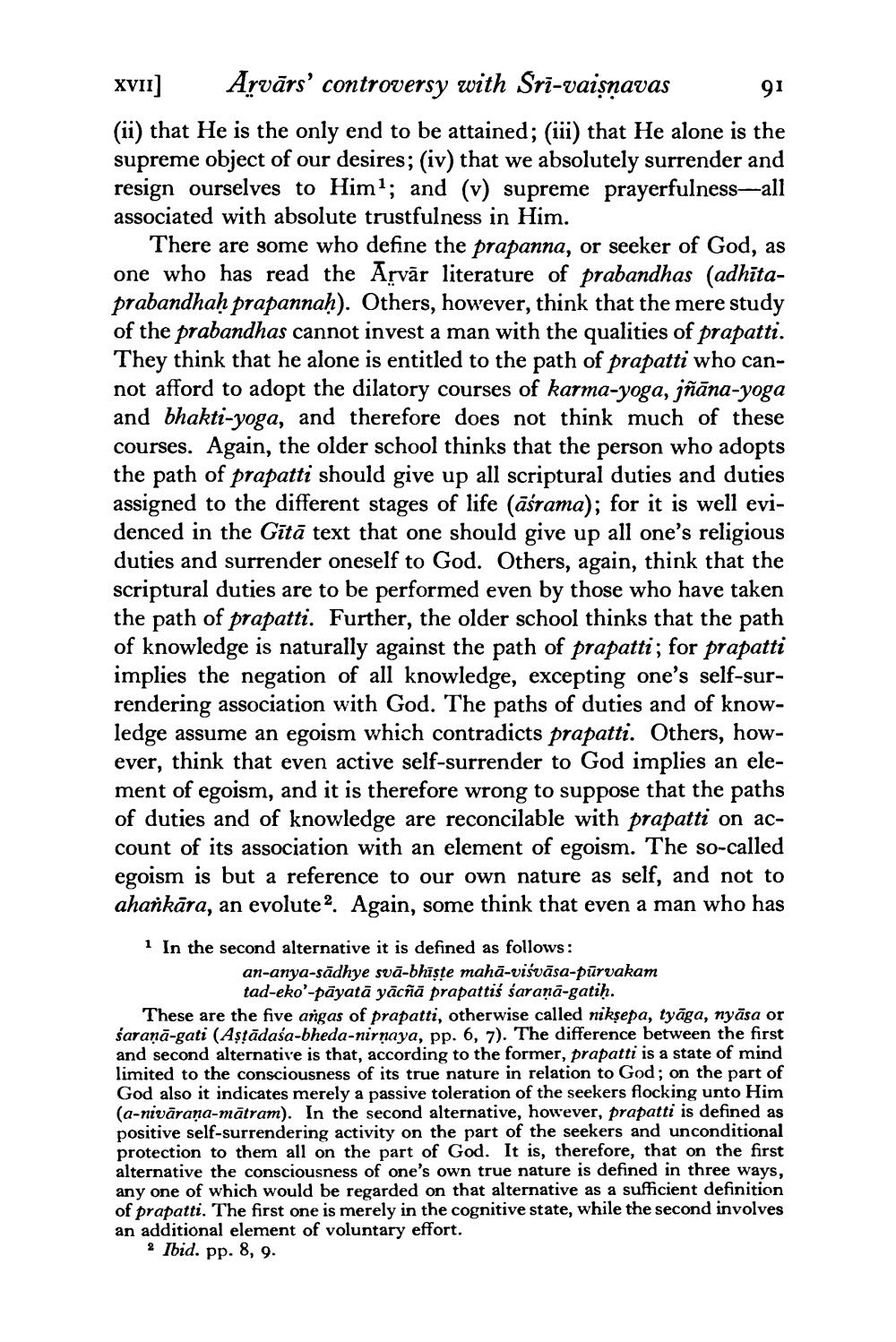________________
XVII] Arvārs' controversy with Srī-vaişnavas 91 (ii) that He is the only end to be attained; (iii) that He alone is the supreme object of our desires; (iv) that we absolutely surrender and resign ourselves to Him?; and (v) supreme prayerfulness—all associated with absolute trustfulness in Him.
There are some who define the prapanna, or seeker of God, as one who has read the Arvār literature of prabandhas (adhītaprabandhaḥ prapannaḥ). Others, however, think that the mere study of the prabandhas cannot invest a man with the qualities of prapatti. They think that he alone is entitled to the path of prapatti who cannot afford to adopt the dilatory courses of karma-yoga, jñāna-yoga and bhakti-yoga, and therefore does not think much of these courses. Again, the older school thinks that the person who adopts the path of prapatti should give up all scriptural duties and duties assigned to the different stages of life (āśrama); for it is well evidenced in the Gītā text that one should give up all one's religious duties and surrender oneself to God. Others, again, think that the scriptural duties are to be performed even by those who have taken the path of prapatti. Further, the older school thinks that the path of knowledge is naturally against the path of prapatti; for prapatti implies the negation of all knowledge, excepting one's self-surrendering association with God. The paths of duties and of knowledge assume an egoism which contradicts prapatti. Others, however, think that even active self-surrender to God implies an element of egoism, and it is therefore wrong to suppose that the paths of duties and of knowledge are reconcilable with prapatti on account of its association with an element of egoism. The so-called egoism is but a reference to our own nature as self, and not to ahankāra, an evolutel. Again, some think that even a man who has
1 In the second alternative it is defined as follows:
an-anya-sādhye svā-bhīşte mahā-viśvāsa-pūrvakam
tad-eko’-pāyatā yācñā prapattiś śaraņā-gatiḥ. These are the five angas of prapatti, otherwise called niksepa, tyāga, nyāsa or śaraņā-gati (Aşťādaśa-bheda-nirnaya, pp. 6, 7). The difference between the first and second alternative is that, according to the former, prapatti is a state of mind limited to the consciousness of its true nature in relation to God; on the part of God also it indicates merely a passive toleration of the seekers flocking unto Him (a-niväraņa-mātram). In the second alternative, however, prapatti is defined as positive self-surrendering activity on the part of the seekers and unconditional protection to them all on the part of God. It is, therefore, that on the first alternative the consciousness of one's own true nature is defined in three ways, any one of which would be regarded on that alternative as a sufficient definition of prapatti. The first one is merely in the cognitive state, while the second involves an additional element of voluntary effort.
2 Ibid. pp. 8, 9.




